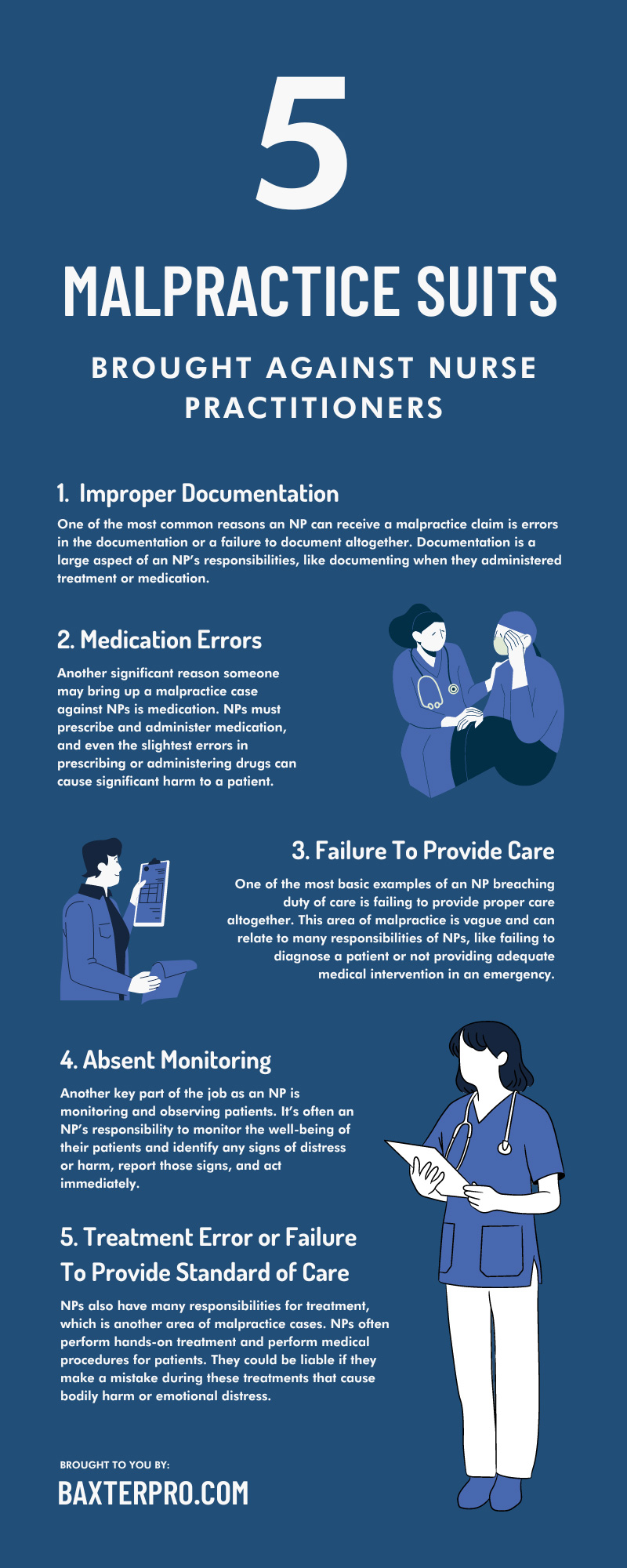Medical malpractice is a serious issue in healthcare and often leads to costly claims, damaged reputations, and even loss of license for medical professionals. Despite this, many myths persist and make it difficult for doctors, dentists, and other medical professionals to navigate the complexities of malpractice insurance. We’ll explore some common misconceptions about medical malpractice and offer tips on avoiding claims.
All Medical Errors Are Considered Malpractice
Medical errors are unfortunate, but not all errors qualify as malpractice. For a situation to be considered malpractice, the patient must have proof of negligence and that the error caused them harm. A malpractice claim without one or the other would be dismissed, as it fails to meet the legal requirements of malpractice. Other legal requirements for malpractice include a professional duty owed to the patient and negligence resulting in damages.
Only Surgeons and Specialists Face Malpractice Risks
While surgeons are the most common targets of malpractice claims because of their work’s high degree of difficulty, they’re not the only people affected. Every healthcare professional faces some level of malpractice risk. Dentists, nurse practitioners, anesthesiologists, certified registered nurse anesthetists (CRNAs), and many more can be liable for their actions. Therefore, all medical professionals must have adequate malpractice insurance coverage.
Malpractice Claims Always Result From a Poor Outcome
While adverse outcomes can lead to malpractice claims, not every negative outcome is related to negligence. Some treatments may come with inherent risks, and many factors can influence patient outcomes beyond the provider’s control. Even a positive surgical outcome can lead to a malpractice suit if the patient experiences unexpected negative side effects.
Malpractice Insurance Only Covers Legal Costs
Malpractice insurance often covers legal defense fees and serves as a financial safety net, covering settlements and damages awarded to patients. As a medical professional, you must understand the scope of your coverage and adjust it as needed.
Patients Frequently File Frivolous Lawsuits
Negative perceptions surround medical malpractice lawsuits, and many people assume that some patients are just trying to make a buck by taking advantage of the legal system. While frivolous lawsuits can occur, most patients file suits due to legitimate issues with their care. Medical professionals should focus on providing quality care and maintaining strong communication with their patients to lower their risk of facing a claim.
Malpractice Claims Always Go to Court
Another common misconception about medical malpractice is that all lawsuits make it to court. However, many malpractice claims are settled out of court or resolved through alternative dispute resolution methods. These methods save time and money for both sides.
The insured should work with their insurance company to find the best approach that fits their unique circumstances.
State-Mandated Minimum Coverage Is Enough
While most states in the US require medical professionals to carry malpractice insurance, state-mandated minimums may not offer sufficient coverage. For those practicing in high-risk specialties, like cardiovascular surgery or obstetrics, greater coverage is ideal because these professions often see higher settlements. Care providers should consider the risks unique to their practice and choose an appropriate level of coverage.
Good Doctors Don’t Get Sued
Medical malpractice claims often have nothing to do with the ability of the targeted medical professional. Even the most competent healthcare providers can face malpractice claims. Accidents and communication mishaps happen, so insurance coverage is crucial for all medical professionals.
The Younger the Patient, the Higher the Settlement
While age may play a role in calculating settlement amounts, the severity of the injury and the level of negligence involved determine settlements. Malpractice cases have no guarantees, so medical care providers should avoid relying on generalizations.
All Malpractice Insurers Offer the Same Coverage
Medical professionals often believe that most malpractice coverage is a one-size-fits-all plan. However, this is not the case.
Carefully review your policy and work with a trusted insurance representative to understand the nuances of your coverage. Insurance carriers offer different policies, so select one that best meets your needs.
How To Protect Yourself From Medical Malpractice Claims
Ideally, you would never face a malpractice lawsuit. These tips can help you avoid problems and reduce the chance of being targeted for medical malpractice.
Prioritize Patient Communication
The source of a malpractice claim often comes from a patient’s frustration at not being heard or listened to. Clear and detailed communication can help you build strong relationships with your patients and prevent misunderstandings that could lead to malpractice claims against you. Maintain open lines of communication and actively listen to your patient’s concerns.
Stay Up-to-Date on Best Practices
Another source of malpractice is a medical provider operating outside their expertise. Continuing education is crucial in the medical field, and providers must stay current on best practices. This includes understanding any changes or updates in laws or regulations related to their specialty.
Keep Thorough Records
Accurate and detailed record-keeping is critical in defending you against malpractice claims. Keep in mind that a patient’s chart is often cited as evidence if a malpractice claim goes to court. Ensure all patient notes are complete, legible, and updated to avoid discrepancies in patient care and your defence.
Implement Risk Management Strategies
Medical care providers can work with their insurance company or join a risk management program to identify and mitigate potential risks in their practice. This can include implementing on-site safety protocols, regularly reviewing patient records, and improving communication with patients.
Review Your Malpractice Insurance Policy Regularly
As your practice evolves or if you face a change in specialty or location, you should review and adjust your malpractice insurance coverage. This is especially important if you recently adopted greater responsibilities in a new position. Ensure your policy reflects your responsibilities. Don’t assume your current policy will cover new risks.
Let Baxter & Associates Help You Stay Protected From Malpractice Claims
Many myths surround negligence and malpractice claims in healthcare. The best thing you can do is protect yourself with a quality malpractice insurance plan. Baxter & Associates helps many medical providers find the policies they need to stay protected, including CRNA malpractice insurance. Get a free quote for our services today, or contact our staff to learn more about medical malpractice insurance.


















